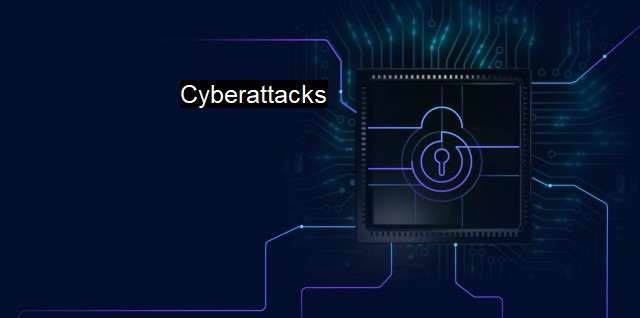What are Cyberattacks?
Cybersecurity Challenges in the Digital Age: Types of Cyberattacks and Their Implications on Individuals and Organizations
Cyberattacks are malicious activities that seek to breach an information system by making an unauthorized entry, often with the aim to steal, change or destroy sensitive data. These can include financial information, personal details, business secrets, or any data that may be of value to the attacker. Cyberattacks are generally carried out covertly, and often rely on sophisticated strategies to circumvent the security protections put in place by the target.Cyberattacks can take a number of forms. At a broad level, these forms can be classified under the heading of data theft, service disruption, and data manipulation. Cyberattacks can target individuals, corporations, and even national governments. As the world has become more reliant on digital systems, the scale and severity of cyberattacks have also intensified.
Data theft is one of the most common forms of cyberattacks. This involves hackers gaining unauthorized access to information systems with an aim to siphon off valuable unrevealed data. This data can then be used for financial gain either through direct theft or through selling it to other entities. Examples of data theft attacks include card cloning where credit card information is stolen, and ransomware attacks where computer systems are locked by the attacker who then ask for ransom to release the locked system.
Service disruption is another tactic where the objective is not to steal data but to disrupt the normal functioning of an information system potentially causing financial loss and reputational damage to the target. An example of this type of attack is a Distributed Denial of Service (DDoS), where multiple devices are used to flood a target web server with requests, leading to its shutdown or severe degradation of service.
Data manipulation, on the other hand, involves tampering with the data in a system so that it produces undesired outcomes. In these kinds of cyberattacks, the attacker intrudes into the system and tweaks the information without the knowledge of the user. This could involve changing numerical values in a financial system, posting inflammatory messages on social media systems, or altering medical records in a healthcare system.
One of the primary lines of defense against cyberattacks is cybersecurity, which involves developing and implementing measures to protect information systems from unauthorized access or harm. These measures include firewalls, which screen out malicious data; intrusion detection systems, which monitor network traffic and identify potential threats; and encryption, which prevents unauthorized reading of data.
Beyond these active measures, training and education are also critical, as individuals can often be the weakest link in cybersecurity. Phishing attacks, for instance, rely on interspersing seemingly harmless emails in the victim's inbox with harmful links or attachments. By educating users about these potential risks, organizations can strengthen their overall protection.
Antivirus software is another crucial tool in combating cyberattacks. These programs scan computers for known pieces of malicious software, or 'malware', and neutralize them. New malware threats emerge daily, so antivirus programs must be regularly updated to stay effective. Despite this, no tool can guarantee complete security, and so a multi-layered approach to cybersecurity – one that combines technical measures with continual vigilance – is generally the most effective.
As our reliance on digital technology increases, so too does the potential for destructive and disruptive cyberattacks. This door to our personal lives, financial systems, and national security must therefore be staunchly guarded by effective cybersecurity measures. Cyberattacks are not just a threat to security but could pose an existential threat if not properly countered. To this end, understanding the range of cyberattacks, maintaining the latest cybersecurity defense mechanisms, and keeping software up-to-date, are crucial to ensure optimal protection against these ever-evolving digital predators.

Cyberattacks FAQs
What are cyberattacks?
Cyberattacks are malicious attempts to gain unauthorized access or damage to a computer system, network, or device, with the intention of stealing, altering or destroying sensitive data. Cyberattacks can come in different forms, including viruses, worms, trojans, ransomware, and other malware.What is cybersecurity?
Cybersecurity refers to the practice of protecting computer systems, networks, and devices against cyberattacks, unauthorized access, theft, and damage to sensitive data or information. Cybersecurity measures include using antivirus software, firewalls, encryption, and other security protocols to improve resilience against cyberattacks.What is an antivirus software?
An antivirus software is a program designed to detect and remove malicious software that may harm or compromise a computer system, network, or device. Antivirus software scans files, websites, email attachments, and other data for malware such as viruses, worms, trojans, ransomware, and other malicious software.How can I protect myself against cyberattacks?
To protect yourself against cyberattacks, you can take several measures such as using strong passwords, enabling two-factor authentication, using antivirus software, keeping your software updated, not clicking on suspicious links or attachments, and making regular backups of your data. It's also essential to stay updated on the latest cybersecurity threats and best practices to ensure you're protected against emerging threats.| | A | | | B | | | C | | | D | | | E | | | F | | | G | | | H | | | I | | | J | | | K | | | L | | | M | |
| | N | | | O | | | P | | | Q | | | R | | | S | | | T | | | U | | | V | | | W | | | X | | | Y | | | Z | |
| | 1 | | | 2 | | | 3 | | | 4 | | | 7 | | | 8 | | |||||||